For the 2025 school year, there are 4 public schools serving 1,517 students in Wabash City Schools School District. This district's average testing ranking is 3/10, which is in the bottom 50% of public schools in Indiana.
Public Schools in Wabash City Schools School District have an average math proficiency score of 20% (versus the Indiana public school average of 38%), and reading proficiency score of 34% (versus the 41% statewide average).
Minority enrollment is 12% of the student body (majority Hispanic), which is less than the Indiana public school average of 37% (majority Hispanic and Black).
Overview
This School District
This State (IN)
# Schools
4 Schools
1,904 Schools
# Students
1,517 Students
1,029,704 Students
# Teachers
94 Teachers
67,292 Teachers
Student : Teacher Ratio
16:1
16:1
District Rank
Wabash City Schools School District, which is ranked within the bottom 50% of all 394 school districts in Indiana (based off of combined math and reading proficiency testing data) for the 2021-2022 school year.
The school district's graduation rate of 90-94% has increased from 85-89% over five school years.
Overall District Rank
#290 out of 400 school districts
(Bottom 50%)
(Bottom 50%)
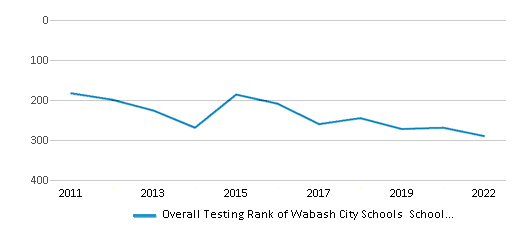
Math Test Scores (% Proficient)
20%
38%
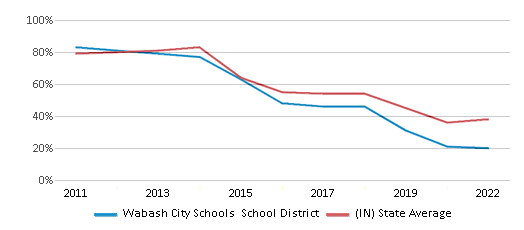
Reading/Language Arts Test Scores (% Proficient)
34%
41%
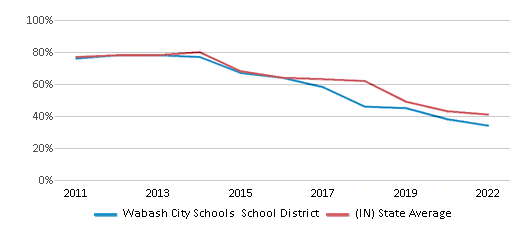
Science Test Scores (% Proficient)
26%
34%
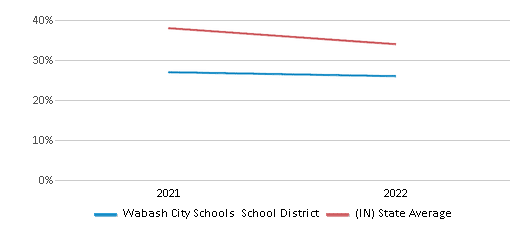
Graduation Rate
90-94%
88%
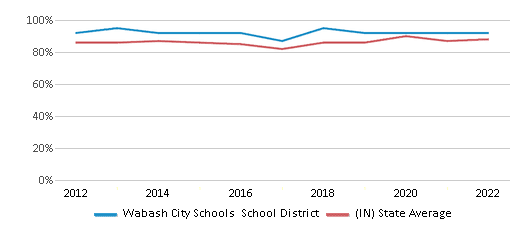
Students by Ethnicity:
Diversity Score
0.23
0.56
# American Indian Students
10 Students
1,659 Students
% American Indian Students
1%
n/a
# Asian Students
10 Students
31,157 Students
% Asian Students
1%
3%
# Hispanic Students
88 Students
150,723 Students
% Hispanic Students
6%
15%
# Black Students
9 Students
137,666 Students
% Black Students
n/a
13%
# White Students
1,330 Students
650,927 Students
% White Students
88%
63%
# Hawaiian Students
n/a
1,062 Students
% Hawaiian Students
n/a
n/a
# Two or more races Students
70 Students
56,510 Students
% of Two or more races Students
4%
6%
Students by Grade:
# Students in PK Grade:
94
23,535
# Students in K Grade:
112
72,972
# Students in 1st Grade:
91
74,029
# Students in 2nd Grade:
104
76,464
# Students in 3rd Grade:
89
74,925
# Students in 4th Grade:
100
76,116
# Students in 5th Grade:
101
74,259
# Students in 6th Grade:
111
75,803
# Students in 7th Grade:
121
76,624
# Students in 8th Grade:
102
78,109
# Students in 9th Grade:
124
80,782
# Students in 10th Grade:
116
82,616
# Students in 11th Grade:
123
81,109
# Students in 12th Grade:
129
79,955
# Ungraded Students:
-
2,406
District Revenue and Spending
The revenue/student of $11,903 in this school district is less than the state median of $13,222. The school district revenue/student has stayed relatively flat over four school years.
The school district's spending/student of $12,485 is less than the state median of $12,852. The school district spending/student has stayed relatively flat over four school years.
Total Revenue
$18 MM
$13,615 MM

Spending
$19 MM
$13,234 MM
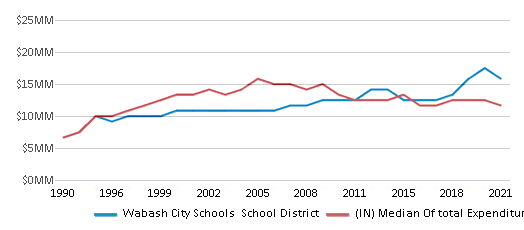
Revenue / Student
$11,903
$13,222
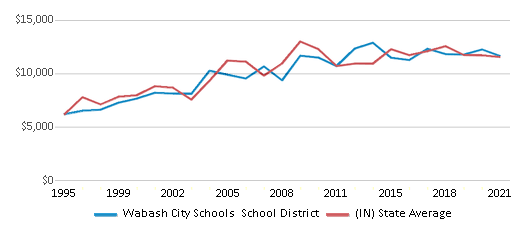
Spending / Student
$12,485
$12,852
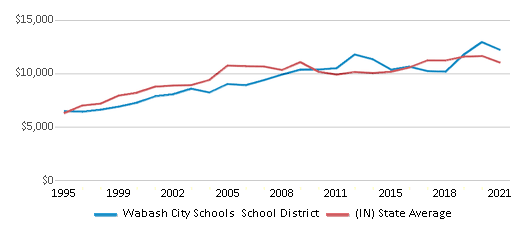
Best Wabash City Schools School District Public Schools (2025)
School
(Math and Reading Proficiency)
(Math and Reading Proficiency)
Location
Grades
Students
Rank: #11.
Wabash High School
(Math: 25-29% | Reading: 40-44%)
Rank:
Rank:
5/
Bottom 50%10
580 N Miami St
Wabash, IN 46992
(260) 563-4131
Wabash, IN 46992
(260) 563-4131
Grades: 9-12
| 492 students
Rank: #22.
Wabash Middle School
(Math: 18% | Reading: 34%)
Rank:
Rank:
3/
Bottom 50%10
150 Colerain St
Wabash, IN 46992
(260) 563-4137
Wabash, IN 46992
(260) 563-4137
Grades: 5-8
| 435 students
Rank: #33.
O J Neighbours Elementary School
(Math: 21% | Reading: 28%)
Rank:
Rank:
3/
Bottom 50%10
1545 N Wabash St
Wabash, IN 46992
(260) 563-2345
Wabash, IN 46992
(260) 563-2345
Grades: PK-4
| 384 students
Rank: n/an/a
1101 Colerain St
Wabash, IN 46992
(260) 274-0333
Wabash, IN 46992
(260) 274-0333
Grades: PK-K
| 206 students
Frequently Asked Questions
How many schools belong to Wabash City Schools School District?
Wabash City Schools School District manages 4 public schools serving 1,517 students.
What is the rank of Wabash City Schools School District?
Wabash City Schools School District is ranked #291 out of 394 school districts in Indiana (bottom 50%) based off of combined math and reading proficiency testing data for the 2021-2022 school year.
What is the racial composition of students in Wabash City Schools School District?
88% of Wabash City Schools School District students are White, 6% of students are Hispanic, 4% of students are Two or more races, 1% of students are American Indian, and 1% of students are Asian.
What is the student/teacher ratio of Wabash City Schools School District?
Wabash City Schools School District has a student/teacher ratio of 16:1, which is higher than the Indiana state average of 15:1.
What is Wabash City Schools School District's spending/student ratio?
The school district's spending/student of $12,485 is less than the state median of $12,852. The school district spending/student has stayed relatively flat over four school years.
Recent Articles
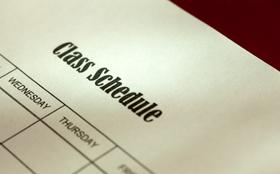
Year-Round Or Traditional Schedule?
Which is more appropriate for your child? A year-round attendance schedule or traditional schedule? We look at the pros and cons.

Why You Should Encourage Your Child to Join a Sports Team
Participating in team sports has a great many benefits for children, there is no doubt. In this article you will learn what those benefits are.

White Students are Now the Minority in U.S. Public Schools
Increasing birth rates among immigrant families from Asia and Central and South America, combined with lower birth rates among white families, means that for the first time in history, public school students in the United States are majority-minority. This shift in demographics poses difficulties for schools as they work to accommodate children of varying language abilities and socio-economic backgrounds.





